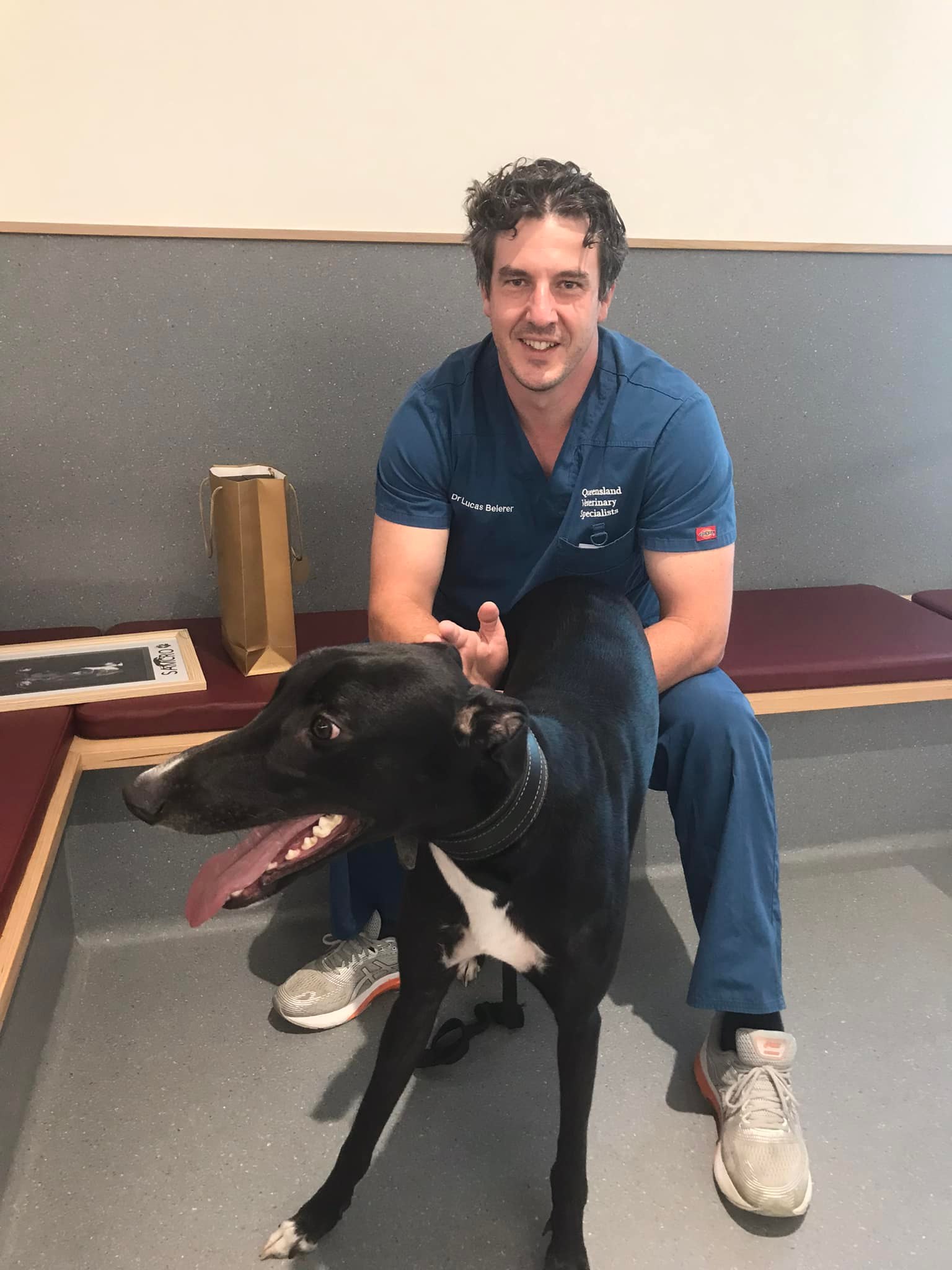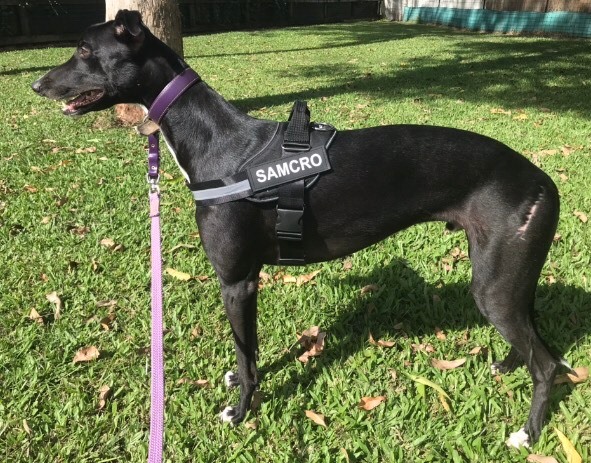By Darren Cartwright
 A dedicated breeder-trainer has spent almost $9,000 on a rare hip replacement for a greyhound even though she knew the puppy would never race.
A dedicated breeder-trainer has spent almost $9,000 on a rare hip replacement for a greyhound even though she knew the puppy would never race.
Samcro was just eight months old when breeder-trainer Robynne Black spotted him limping as he walked, alongside his eight siblings, to the back door of their Moreton Bay home.
It would take many trips to the vet over several months, including emergency surgery on Boxing Day and New Year’s Day, for Samcro to get back to full health.
He now walks without a limp, and you would never know he had a hip replacement, says Robynne with delight.
Such has been the success of veterinarians Dr Lucas Breier (pictured) and Dr Jason Beck at Queensland Veterinary Specialists, Samcro was now fit enough to line up behind the boxes at Albion Park, not that he ever would, said Robynne.
“The minute I took him to Jason I said we needed to save the leg as amputation was the easy option and we weren’t going to do that,” Robynne said.
“The hip has healed well enough for him to race, but that was never the reason we spent so much time and effort bringing him back to full health.
“We love our greyhounds, and we just wanted him to have a normal healthy life.”
Dr Breierer said it was the first hip operation he had performed on a greyhound, and it was rare for the breed to have hip problems in general.
The most common reason for hip replacements in canines was hip dysplasia, a degenerative condition affecting the ball and socket of the hip, and it’s very uncommon in greyhounds, he said.
“Greyhounds don’t experience Hip dysplasia and 95 per cent of hip replacements in dogs are because of hip dysplasia,” Dr Breierer said.
“It’s a very uncommon procedure for a greyhound.”
The x-ray showed the femoral head break although amputation would have been “an absolute worst-case scenario”, Dr Breier said.

One procedural option was a femoral head ostectomy which restores pain-free mobility to a damaged hip by removing the head and neck of the femur, he said.
“The alternative replacement to a hip replacement would have been a femoral head ostectomy and that is where the ball is removed...it results in an ongoing degree of lameness,” he said.
“The leg is then supported by the muscles alone although the operation is becoming less performed in dogs.”
How the accident occurred while the pups were playing on the property is still a mystery for Robynne who only breeds every couple of years and keeps the entire litter.

It was two days before Christmas when Robynne heard a “yelp” and went to investigate to find Samcro in pain.
“The whole litter was just running around the paddock, and I heard a yelp, and his hip was swinging, and I rushed him straight to the vets for an x-ray,” she said.
 “He had snapped the femoral head off the hip, and he had the hip pinned and a screw put in it.
“He had snapped the femoral head off the hip, and he had the hip pinned and a screw put in it.
“A few days later it snapped, and he was in surgery again on Boxing Day and then again on New Year’s Day.
“The operations and treatments cost about $8,500 but Jason and Lucas did everything possible to keep our costs down and we cannot be more grateful.”
Even though it was decided Samcrowould have a hip replacement, Robynne, pictured with fit and healthy Samcro, spent two weeks before surgery performing physio to ease nerve damage in the hip.
The hip operation was performed on January 11 by Dr Breierer, a hip specialist, and it would take more than three months before Samcro was allowed to walk off a lead.
“He had 104 days on the lead after that with intense physio,” Robynne said with total recall.
“You wouldn’t know it now though as he can gallop perfectly.”
Robynne’s efforts and dedication to nursing Samcro back to health and her willingness for him to have a hip replacement showed her love for the breed, said Dr Breierer.
“There’s a lot of effort Robynne would have put into reducing the likelihood of complications post-surgery,” he said.
“It was a few months of rest and post-care, and it was an absolute highlight to see that commitment of any owner who wants to go on that journey."